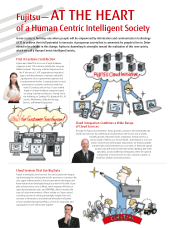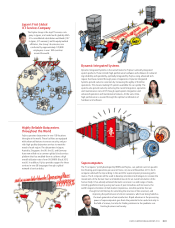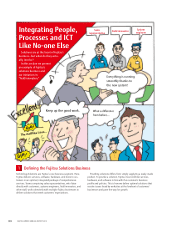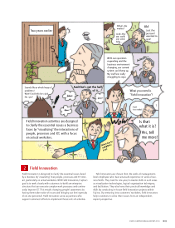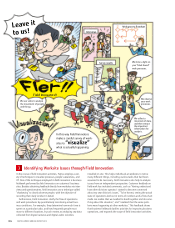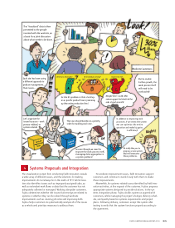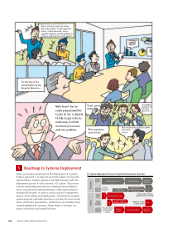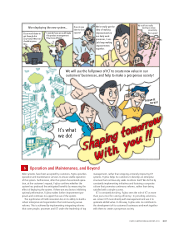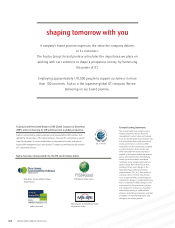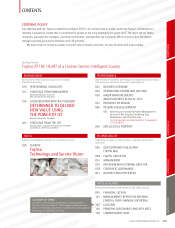Fujitsu 2013 Annual Report Download - page 6
Download and view the complete annual report
Please find page 6 of the 2013 Fujitsu annual report below. You can navigate through the pages in the report by either clicking on the pages listed below, or by using the keyword search tool below to find specific information within the annual report.
In the course of field innovation activities, Fujitsu employs a vari-
ety of techniques to visualize processes, people’s awareness, and
ICT. One of the techniques employed in field innovation is business
fieldwork performed by field innovators on customers’ business
sites. Besides obtaining feedback directly from worksites via inter-
views and questionnaires, field innovators use a technique called
“shadowing” to closely observe people, with the objective of
recording their daily conduct in detail.
Furthermore, Field innovators clarify the flow of operations
and work procedures by quantitatively monitoring actual busi-
ness conditions. For example, they determine how much time is
spent on a particular tasks, and how frequently people must
move to different locations, by such means as analyzing raw data
collected from digital cameras and digital audio recorders
installed on site. This helps individuals at worksites to notice
many different things, including useless tasks that had been
assumed to be necessary. Field innovators also help to analyze
issues from an independent perspective. Customer feedback on
field work has included comments, such as “Having understood
how other divisions operate, I started to become concerned
about my own division’s issues,” “To be honest, seeing the actual
state of operations laid out in terms of numbers and a flow chart
made me realize that we needed to band together and do some-
thing about the situation,” and “I realized that the same prob-
lems were happening at other worksites.” This feedback shows
that business fieldwork clarifies priorities for improving business
operations, and expands the scope of field innovation activities.
3Identifying Worksite Issues through Field Innovation
Field Innovators!!
Interviews
Survey results
We use video to analyze
the movement of people
and things.
In this way Field Innovators
make a careful survey of work-
sites to “visualize”
what is actually happening.
We observe
your work
processes.
We collect a
mountain of data,
and then extract
the important
information for
analysis.
We shine a light on
your “black boxed”
work processes.
Work process flowchart
Leave it
to us!
Hmm…
Blip!
004 FUJITSU LIMITED ANNUAL REPORT 2013


